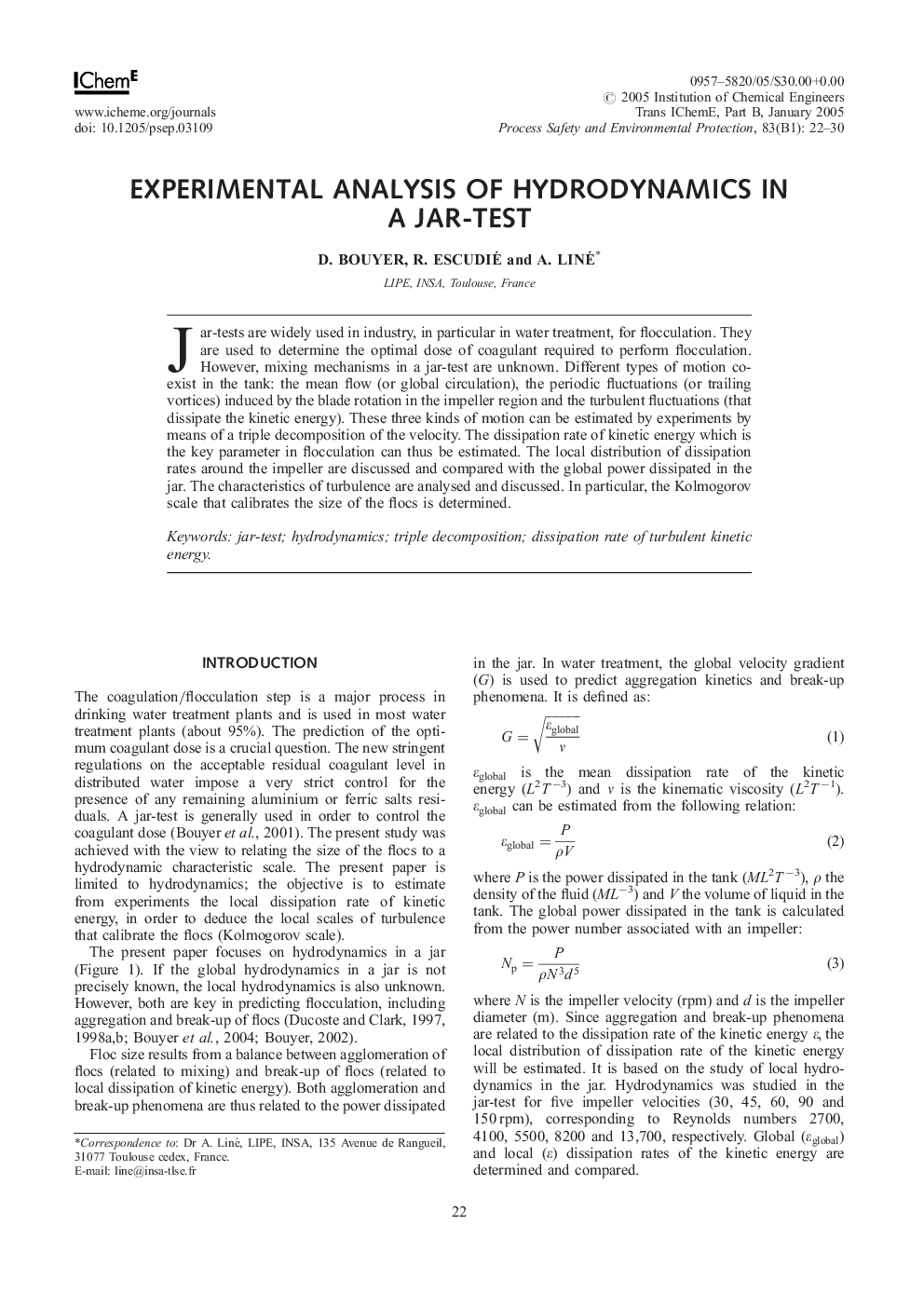| Article ID | Journal | Published Year | Pages | File Type |
|---|---|---|---|---|
| 10374011 | Process Safety and Environmental Protection | 2005 | 9 Pages |
Abstract
Jar-tests are widely used in industry, in particular in water treatment, for flocculation. They are used to determine the optimal dose of coagulant required to perform flocculation. However, mixing mechanisms in a jar-test are unknown. Different types of motion coexist in the tank: the mean flow (or global circulation), the periodic fluctuations (or trailing vortices) induced by the blade rotation in the impeller region and the turbulent fluctuations (that dissipate the kinetic energy). These three kinds of motion can be estimated by experiments by means of a triple decomposition of the velocity. The dissipation rate of kinetic energy which is the key parameter in flocculation can thus be estimated. The local distribution of dissipation rates around the impeller are discussed and compared with the global power dissipated in the jar. The characteristics of turbulence are analysed and discussed. In particular, the Kolmogorov scale that calibrates the size of the flocs is determined.
Keywords
Related Topics
Physical Sciences and Engineering
Chemical Engineering
Chemical Health and Safety
Authors
D. Bouyer, R. Escudié, A. Liné,
